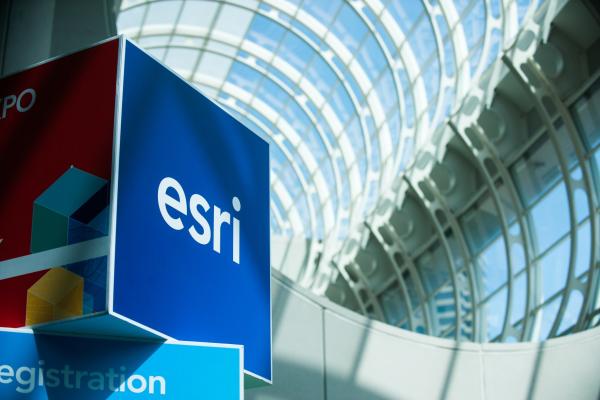Published on the 22/08/2018 | Written by Heather Wright

Esri user conference demonstrates the value that a simple map can deliver…
“CFO’s love saving money. Maps can save money.”
That statement from Chris Cappelli, director of GIS mapping software, spatial data analytics and location platform provider Esri, was a repeating theme at the Esri User Conference, where using maps for storytelling is under the microscope.
Examples of using GIS to turn data into easily understandable information through maps to support smart decision making – and money savings for companies – was front and centre at the event, hosted by Esri’s New Zealand distributor, Eagle Technology. Examples served up ranged from high country farm stations using GIS guidance for precision aerial fertiliser application to councils using GIS to flag potential damage to infrastructure from hazardous trees, gain insights into the impacts of graffiti and be reunited with traffic cones (yes, really, there is a cost saving from both cones reunited with the council and reduction in calls to council about stray cones).
“Sometimes, the simplest map has the biggest impact.”
Cappelli, however, was highlighting the Port of Rotterdam’s move to become ‘ a living breathing geo-centric organisation’ with ArcGIS Enterprise integrated into all of the ports operations.
The move, Cappelli notes, didn’t happen overnight, instead happening ‘one information product at a time’.
The port, which is one of the largest and busiest in the world with a ship coming in every six minutes, 365 days of the year; and 350 million tonnes of cargo offloaded each year, was seeking growth, but wasn’t able to physically expand as it was constrained by the surrounding waterways and city.
Instead, a decision was made that rather than being the biggest port in the world – something it had been for a number of decades, it would be ‘the best’ – the most responsive to customer needs, the safest, most efficient and most sustainable.
The Port Maps platform pulls all of the Port’s information together (in a speech last year, Port of Rotterdam program manager Erwin Rademaker, said the project transformed 1,500 layers of information into 10 simple core objects on maps) and provides a single point of entry for all port information for all of the port’s workers, including business, project and asset managers, environmental advisors, the port harbour master operators and financial analysts.
And the favourite maps for the CFO? Why, the ones that help save the most money, of course. In the Port of Rotterdam’s case, that includes a map which shows all the leased properties, when leases are due and quickly shows potential options if customers want to expand or exchange leased property.
“It’s the favourite of the CFO because never before had they put all their leasing on a map so they could see current status and projected status, month by month, for all these properties,” Cappelli says.
“Sometimes, the simplest map has the biggest impact.”
Also a winner for the port, and its CFO, was the integration of survey and dredging information into maps, enabling the company to stop costly wholesale dredging of the port and instead to move to ‘just in time’ dredging, based on projected ship traffic.
“It may seem commonsense, but the port had never had the ability to do that until they implemented GIS. It has literally saved them hundreds of millions of Euros,” Cappelli says.
“So once again an information product that we geographers and GIS professionals can make in our sleep results in real savings of real money and has a big impact.”
The port is also using GIS to manage its biggest, most critical, assets – the ‘quay walls’ or wharves.
“Again, it’s a simple map but it allows them to see information and project out how they spend money on maintaining those critical assets,” Cappelli says.
Cappelli says showing maps that save money is viewed favourably by the C-suite – but it isn’t only about cost saving map stories.
He cited the case of creating a map showing where a particularly congressman had invested all his money during his time in congress.
“I showed him the map and he said ‘you’ve got to change the map’. I said, ‘I can’t, you have to.’
“When people see things on maps generally it’s the first time they have had that perspective. That usually informs a first level of cognitive awareness where they’re starting to make other connections.”
Highlighting areas of challenge and exceptions companies need to focus on, can also prove valuable.
“And a third area where I’m seeing more an more of C-suite and GIS professionals coalescing the most is ‘what should I do next.
“That’s an area we’re just starting to scratch the surface on, and that’s where you really think about machine learning to process ginormous volumes of information.”



























